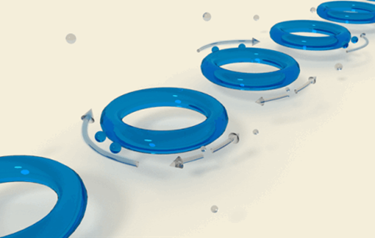Scientists Introduce New Light Coupling Techniques To Improve Sensitivity Of Optical Resonators
By Jof Enriquez,
Follow me on Twitter @jofenriq

Two independent teams of scientists have developed different alternative schemes to couple modes of light and make them coalesce to enhance optical resonators and make them much more sensitive compared to conventional sensing devices.
One group of researchers from Washington University (St. Louis, Mo.) and Otto-von-Guericke University Magdeburg (Germany) used "two nanoscale scatterers [nanotips] to tune a whispering-gallery-mode micro-toroid cavity, in which light propagates along a concave surface by continuous total internal reflection, in a precise and controlled manner to exceptional points," according to the study published in Nature.
A third particle or nanotip then perturbs the system from its exceptional points and leads to a frequency splitting, which is the sensing signal that is detectable with a level of precision not yet achieved by conventional optical sensors.
"It's challenging to detect nanoscale objects, such as nanoparticles," team leader Lan Yang said. "If the object is very small, it introduces little perturbation to a sensing system. We utilize an unusual topological feature associated with exceptional points of a physical system to enhance the response of an optical sensor to very small perturbations, such as those introduced by nanoscale objects. The beauty of the exceptional point sensor is the smaller the perturbation, the larger the enhancement compared to a conventional sensor."
A second group of scientists from the University of Central Florida and Michigan Technological University, in an experimental demonstration, coupled a ternary (three-part) sensor attached to gold heating elements both to precisely tune the sensor and to emulate perturbations.
Hossein Hodaei and colleagues wrote in Nature that they were able to observe "higher-order exceptional points in a coupled cavity arrangement — specifically, a ternary, parity–time-symmetric photonic laser molecule—with a carefully tailored gain–loss distribution."
Limited by the strength of perturbations, conventional optical resonators are likewise inherently limited in their sensitivity. These new engineering techniques that amplify the effect of perturbations, however, are "opening the door to ultraprecise sensing," wrote Mikael C. Rechtsman, assistant professor of physics, Pennsylvania State University.
In particular, while the shift in frequency in conventional optical resonators caused by a perturbation is directly proportional to the strength of the perturbation, the same relationship is not exactly linear in these new experimental sensors. The team with the single toroidal resonator reported that the frequency shift scales in the square root of the perturbation strength, while the group with the ternary resonator reported frequency splitting in the cube root scale — showing these devices to be more sensitive than existing sensors.
